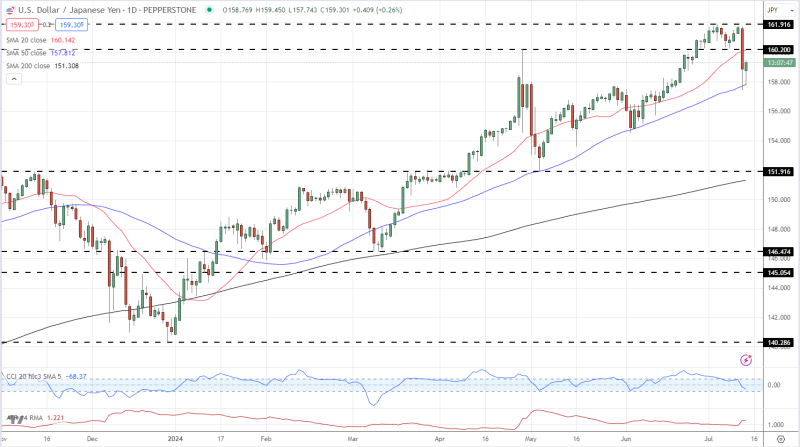12 Jul, 2024
Japanese Yen (USD/JPY) Analysis
- USD/JPY hit a three-week low after a softer-than-expected US CPI print.
- Size and speed of the move fuel intervention speculation.
USD /JPY shed over 400 pips in just over 30 minutes yesterday afternoon, hitting 157.42, after the latest US CPI report showed price pressures easing by more than expected in June. US dollar weakness was driven by a sharp boost in US rate cut expectations which at one stage yesterday hit a 97% probability for a cut at the September 18 FOMC meeting. The US dollar fell across the board, but the weakness in USD/JPY stood out for the size and speed of the sell-off.
This invariably sparked talk about Bank of Japan (BoJ) intervention, especially as USD/JPY was trading around a 38-year high just before the US CPI data was released. Various reports suggest that the BoJ may have been checking market prices, a known form of verbal intervention that precedes any actual action, although this remains difficult to confirm. Stop losses may also have been triggered for traders who have been running the long USD/JPY trade over the last few weeks. Japanese officials refused to comment on market speculation, leaving the market waiting for official data at the end of the month to see if the BoJ/MoF bought any Japanese Yen.
The US dollar is marginally stronger in early European trade, pushing USD/JPY back to 159.25. The pair have made a handful of attempts to break above 162.00 over the last two weeks without any success and this level of resistance should hold going forward. Financial markets are currently showing a 46% chance that the BoJ will hike rates by 10 basis points at the end of July, a move that would start to narrow the interest rate differential between the two currencies and weaken USD/JPY.
USD/JPY Daily Price Chart

Retail trader data shows 28.57% of traders are net-long with the ratio of traders short to long at 2.50 to 1.The number of traders net-long is 6.24% higher than yesterday and 19.65% higher than last week, while the number of traders net-short is 24.54% lower than yesterday and 27.96% lower than last week.
We typically take a contrarian view to crowd sentiment, and the fact traders are net-short suggests USD/JPY prices may continue to rise. Yet traders are less net-short than yesterday and compared with last week. Recent changes in sentiment warn that the current USD/JPY price trend may soon reverse lower despite the fact traders remain net-short.
